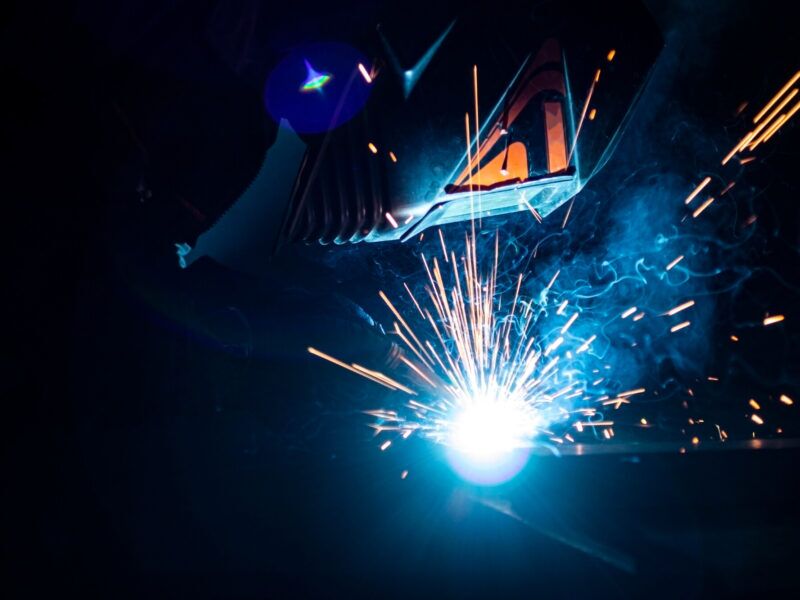Comprehending the Causes and Solutions for Undercut Welding in Metal Construction Processes
In the realm of metal fabrication processes, the occurrence of undercut welding poses a significant challenge that demands a comprehensive understanding of its reasons and sensible solutions. The detailed interaction of numerous aspects throughout welding operations can result in this undesirable phenomenon, influencing the architectural stability and general quality of the welded joints - Preventing weld undercut. By studying the origin of undercut welding and exploring effective therapeutic actions, producers can elevate the standard of their handiwork and make sure the production of flawless steel elements
Common Root Causes Of Undercut Welding
Often ignored in metal construction, undercut welding happens due to different variables that require meticulous attention and competence to be successfully minimized. In addition, inappropriate welding strategies, such as using the incorrect welding angle or take a trip rate, can additionally add to damage development. The selection of welding criteria, such as voltage, existing, and cord feed rate, plays a considerable function in the incident of undercut welding.
Effect of Incorrect Welding Parameters
Unreliable welding specifications can substantially jeopardize the stability and quality of welded joints in steel manufacture procedures. The effect of inaccurate welding parameters manifests in numerous means, causing structural weaknesses and defects in the bonded elements. One vital element affected by inappropriate welding criteria is the penetration depth of the weld. Not enough warmth input because of low welding currents or exceedingly high traveling speeds can cause insufficient fusion in between the base steels, leading to insufficient joint penetration and weakened bonds. Alternatively, extreme heat input triggered by high welding currents or sluggish travel rates can result in burn-through and excessive reinforcement, developing a breakable and unstable weld framework. Additionally, wrong specifications such as improper voltage setups or incorrect electrode angles can add to erratic weld grain accounts, lack of blend, and boosted chances of flaws like undercutting. Consequently, precise focus to welding parameters is extremely important to guarantee the manufacturing of top quality welds with the wanted mechanical buildings and structural stability.
Result of Improper Lantern Angle
Improper torch angle in welding operations can significantly impact the quality and integrity of the final weld joints in metal fabrication procedures. The lantern angle plays a crucial role in determining the heat input and circulation throughout welding. When the lantern angle is wrong, problems such as undercutting can occur. Undercutting is a common welding defect where a groove creates along the weld toe, damaging the joint and endangering its architectural integrity.
A torch angle that is too high can cause inadequate penetration, insufficient combination, and enhanced spatter. On the other hand, a lantern angle that is as well shallow can cause extreme penetration, burn-through, and distortion of the base product. Preventing weld undercut. Appropriate torch angle is essential for making certain constant weld quality, toughness, and look
To stop damaging and other defects created by incorrect lantern angles, welders need to be trained to keep the appropriate lantern angle throughout the welding process. Normal tracking and adjustment of lantern angles during welding can assist achieve audio welds with minimal flaws.
Role of Inadequate Welding Strategies

One more element of inadequate welding techniques is improper weld prep work. Poor cleansing of the base metals, wrong joint design, or not enough edge prep work can all add to undercut welding. Poor protecting gas protection or using the incorrect type of gas can result in incomplete blend and the development of undercut problems.
To address the duty of insufficient welding techniques in steel construction processes, it is essential to give detailed training for welders. Appropriate education and learning on welding criteria, joint preparation, and securing gas choice can help protect against undercut welding and guarantee top quality welds in steel construction tasks.
Efficient Solutions for Undercut Welding
Addressing additional resources undercut welding in steel fabrication calls for executing reliable services to boost weld high quality and architectural integrity. Among the primary options to combat undercut is to readjust welding parameters such as voltage, present, and take a trip speed to make certain proper warm input and fusion. By fine-tuning these settings, welders can protect against excessive melting of the base steel and filler product, decreasing the chance of undercut formation.
Furthermore, proper joint prep work is essential in stopping undercut. Ensuring clean base steel surface areas without pollutants and making use of the appropriate bevel angle can assist advertise far better weld penetration and decrease the danger of undercut - Preventing weld undercut. Using suitable welding techniques, such as oscillating the lantern or weaving, can additionally aid in distributing warm uniformly and loading the weld joint adequately, reducing the possibility of undercut flaws
In addition, picking the correct welding consumables, including electrodes and filler metals, is vital in alleviating undercut. Making use of products with ideal chemical make-ups and mechanical you can check here residential or commercial properties can contribute to accomplishing sound welds with very little undercut. Routine evaluation and high quality control procedures must likewise be carried out to find and attend to undercut problems immediately, making sure the general stability of fabricated metal parts.

Verdict
To conclude, comprehending the causes and services for undercut welding in metal manufacture procedures is vital for accomplishing premium welds. By dealing with common reasons such as inaccurate welding specifications, improper lantern angle, and insufficient welding methods, welders can prevent damaging and make sure strong, sturdy welds. It is important to take notice of these elements and implement reliable services to improve the total welding process and end product quality.
